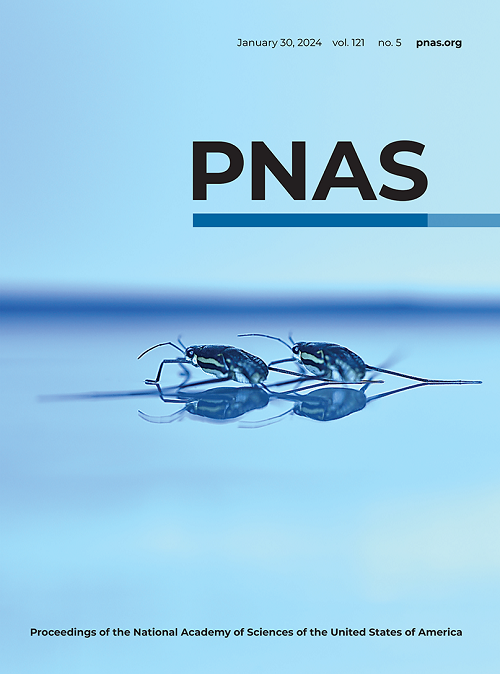Human land use promotes range expansion of soil protists from temperate to subtropical regions in China.
IF 9.4
1区 综合性期刊
Q1 MULTIDISCIPLINARY SCIENCES
Proceedings of the National Academy of Sciences of the United States of America
Pub Date : 2025-07-22
DOI:10.1073/pnas.2413220122
引用次数: 0
Abstract
Land-use changes are reshaping the distribution of aboveground species worldwide. However, the impact of land-use changes on the distribution of soil organisms remains poorly understood. In particular, we lack a mechanistic understanding of the environmental factors reshaping the distribution of soil microbiota in response to global biological homogenization. Here, we used metabarcoding to investigate the biogeography of protists and their relationships with prey and hosts in three human-dominated ecosystem types, i.e., farmlands, residential areas, and parks, along with natural forests, in subtropical and temperate climatic regions across China. We found that human land-use systems extended the distribution range of habitat-generalist protists compared to forests. This human-facilitated spread of protists was highly directional and mainly driven by temperate to subtropical range expansion of soil taxa. Put simply, increases in soil pH associated with human land uses mitigate the natural acidity barrier typically found in subtropical ecosystems, facilitating the temperate to subtropical range expansion of protist species. However, in temperate regions, the northward expansion of subtropical species is likely restricted by a more arid climate with even higher soil pH. The cross-region spread of soil protists was more pronounced in phagotrophs than phototrophs and parasites, reflecting codispersal of phagotroph protists and microbial prey (especially bacteria) related to tight predator-prey specialization and/or similar responses to environmental changes. Our findings indicate that land-use changes create hotspots of potential microbial invasions, particularly in subtropical and tropical regions, highlighting that understudied regions are likely to be strongly affected by biological homogenization related to introduction of exotic species.人类土地利用促进了中国从温带到亚热带土壤原生生物的活动范围扩大。
土地利用的变化正在重塑全球地上物种的分布。然而,土地利用变化对土壤生物分布的影响仍然知之甚少。特别是,我们缺乏对全球生物同质化重塑土壤微生物群分布的环境因素的机制理解。本文利用元条形码技术对中国亚热带和温带3种以人类为主导的生态系统类型(农田、居民区、公园和天然林)中原生生物的生物地理学及其与猎物和寄主的关系进行了研究。我们发现,与森林相比,人类土地利用系统扩大了生境通用型原生生物的分布范围。这种由人类促成的原生生物传播具有高度的方向性,主要是由土壤类群的温带到亚热带范围扩张驱动的。简而言之,与人类土地利用相关的土壤pH值增加减轻了亚热带生态系统中常见的自然酸度屏障,促进了原生物种在温带到亚热带范围的扩展。然而,在温带地区,亚热带物种的向北扩张可能受到更干旱的气候和更高的土壤ph的限制。土壤原生生物在吞噬生物中的跨区域传播比光养生物和寄生虫更为明显,反映了吞噬生物原生生物和微生物猎物(特别是细菌)的共扩散,这与捕食者-猎物的紧密特化和/或对环境变化的类似响应有关。研究结果表明,土地利用变化形成了潜在的微生物入侵热点,特别是在亚热带和热带地区,这表明研究不足的地区可能受到与外来物种引入相关的生物同质化的强烈影响。
本文章由计算机程序翻译,如有差异,请以英文原文为准。
求助全文
约1分钟内获得全文
求助全文
来源期刊
CiteScore
19.00
自引率
0.90%
发文量
3575
审稿时长
2.5 months
期刊介绍:
The Proceedings of the National Academy of Sciences (PNAS), a peer-reviewed journal of the National Academy of Sciences (NAS), serves as an authoritative source for high-impact, original research across the biological, physical, and social sciences. With a global scope, the journal welcomes submissions from researchers worldwide, making it an inclusive platform for advancing scientific knowledge.

 求助内容:
求助内容: 应助结果提醒方式:
应助结果提醒方式:


